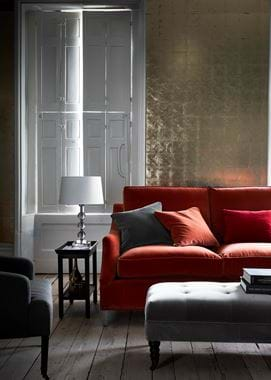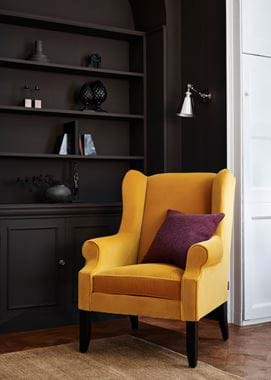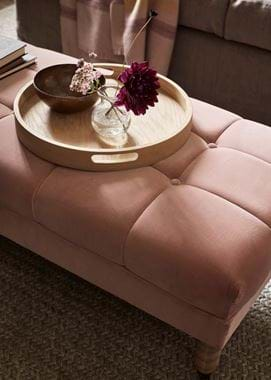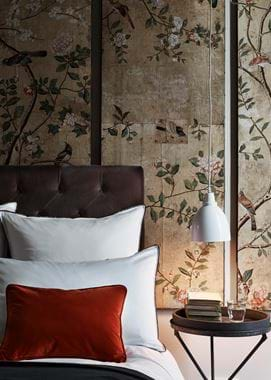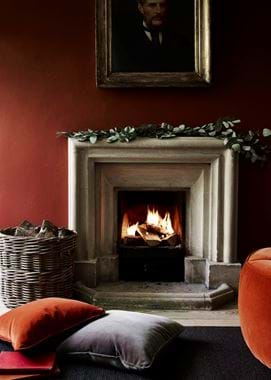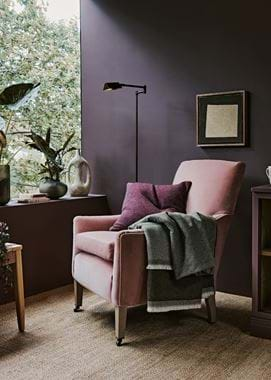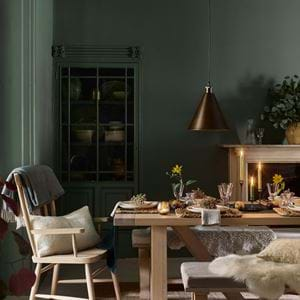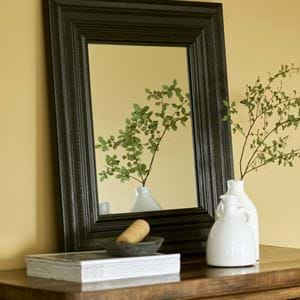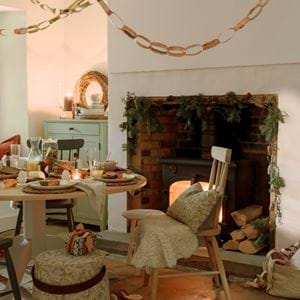A history of velvet
A history of velvet
So much of what’s alluring about fabrics relates to touch. And nowhere more so than in the case of velvet, one of the most strokable of all textiles. Brushing your hand across its dense pile and watching it shift between matt and satiny is a gesture that comes instinctively (and one that, with our robust cotton velvets, you can freely indulge; they won’t mark like more fragile versions). Unsurprisingly, velvet is a fabric that’s seduced royalty and style connoisseurs for generations.
Velvet’s story begins in ancient Egypt and China, where examples made from silk have been found that date back to 2,000 BC. Made by hand using labour-intensive techniques, the textile was accessible only to the wealthiest and was traded on the Silk Route, via which it made the journey to medieval Europe. The word ‘velvet’ – which notably alludes to the fabric’s piled structure, not its composition – first appears around the 14th century.
The Italian cities of Venice and Genoa were among the first to produce velvet on a large scale. It quickly came to symbolise the glamour and opulence of the Renaissance, capturing the attention of great artists such as Michelangelo, who created his own velvet fabrics, and Leonardo da Vinci, who was fascinated by the craft itself (velvet is made on looms that weave two layers of fabric in together, which are then cut apart to create the pile). Renaissance artists spent many an hour trying to mimic in paint the plush texture of ornate cut velvets, which were often shot with gold threads to accentuate their sheen.
At this time, velvet was used for everything from religious robes to wallcoverings and, in the most extravagant case, a loo seat – Henry VIII’s, no less. Notorious for his lavish appetite for fine fabrics, it seems only velvet would do for comfort in the King’s bathroom. Henry also filled Hampton Court Palace with opulent velvets, admiring the way that they glowed by candlelight.
Such pleasures were only available to the few, thanks to sumptuary laws that limited who could buy luxury goods. These laws also governed which colours could be worn by whom, and since velvet was dyed using only the brightest, costliest colours, that added another layer of exclusivity to its image.
It wasn’t until the 19th century, when modern industrial machinery meant that velvet no longer had to be made painstakingly by hand, that it became more accessible. Yet it lost none of its allure. Instead, it became the signature of a bohemian way of life, favoured by writers like Oscar Wilde (frequently photographed in his beloved velvet jackets) and the celebrated actress Sarah Bernhardt.
Today, velvet once again captures the zeitgeist. We’re eager to embrace fabrics that feel as good as they look, and that bring an element of sensuality to everyday life. And while modern velvets may be more hardwearing and subtly coloured than their antique counterparts, they’re as indulgent as they ever were.
Explore our velvet collection, Isla, online here, or see (and touch) the fabrics for yourself in one of our stores.

